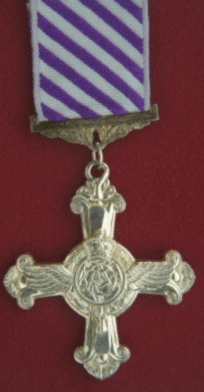The Middlemiss File
Honorary Colonel R.G. (Bob) Middlemiss, W/C(Ret) DFC ,CD, SSM
Military Service - 1939 - 1969
Military Service (Honourary Colonel 427 Squadron) - 2003 - 2013
Bob was born in Montreal and was initially educated there. After graduating from high school he accepted
a track scholarship from an American College but war broke out and he volunteered to join the RCAF. He was told
when an opening was available he would be called. In the interim, his Dad`s Regiment, of which he was the RQSM,
the 17th Duke of York`s Royal Canadian Hussars was mobilized as the 3rd Canadian Motorcycle Regiment. Bob decided
to join as a trooper but was called by the Air Force and a few months later joined the RCAF on September 14, 1940.
He received his flying training at 13 EFTS, St. Eugene, ON and 9 SFTS, Summerside, PEI where he received his wings.
He was posted overseas and trained on Spitfires at 57 OTU, Hawarden, Cheshire. He was posted to 145 Squadron and
then later to 41 Squadron. They carried out operations consisting of air defence patrols against high level and
low level fighter bomber attacks, convoy patrols in the English Channel, fighter sweeps, bomber escort and low
level rhubarbs.
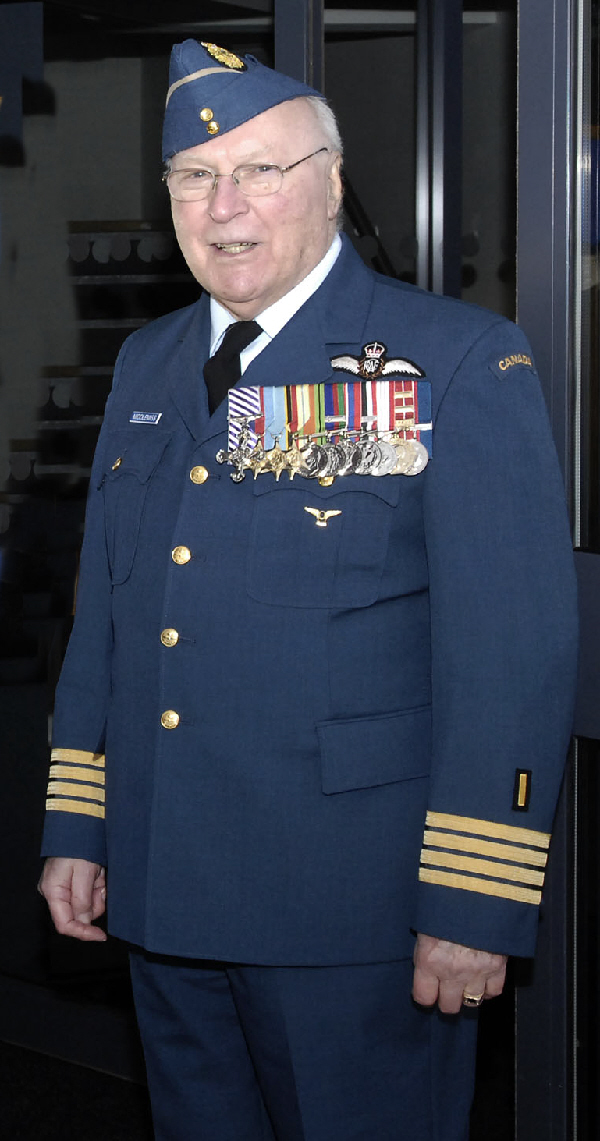
In June 1942, he was selected to serve with a team of Spitfire pilots posted to Malta. They were taken to within
700 miles of Malta on the aircraft carrier HMS Eagle and then launched to hopefully make the Island. Out of 31 only 27 made it. The others shot down by German fighters. During his
tour with 249 Squadron on Malta Bob shot down and destroyed three enemy aircraft and damaged two others( ed. note:
years later he found out out that one of the two damaged had been confirmed destroyed ) before he was shot down
and wounded.
After recuperating, he served as an Instructor at 52 OTU and then 53 OTU in England. From the OTU he was posted
to 403 Squadron, part of the 127 Wing commanded by Johnnie Johnson, the highest scoring ace of WW11. Bob had the
honour of flying as his number 2 on a number of sorties. After completing two tours of operations he returned
to Canada and instructed on Hurricanes and Mosquitos.
Colonel Middlemiss was decorated for his war effort with the Distinguished Flying Cross the citation read
as follows:
``This officer completed two tours of operational duty and has completed sorties
from Malta and the United Kingdom. He has destroyed three enemy aircraft and
damaged others. His standard of leadership as a section leader and flight
commander has always been high and he has invariably shown outstanding courage``
Post war he was the first Exchange Officer at the RAF Central Fighter Establishment,
flying Spitfire XIVs, Vampire and Meteor aircraft. He returned to Canada and was
selected as the first CO of 421 Squadron based at St.Hubert flying F-86 aircraft.
After completing Leapfrog 2 and delivering his squadron to 2 Wing,Grostenguin, France, he was tasked to
form No. 1 Overseas Ferry Unit which ferried some 650 Sabre and T-33 aircraft
across the Atlantic. Bob led units on 16 crossings.
His next move was to Air Force HQ as the Operational Project Officer for the replacement of the Sabre.
Along with Jack Woodman, they proceeded to California to evaluate the top two
contenders, the Lockheed F-104 and the Grumman F-11F-1F at Edwards AFB. As a
result of their recommendations the Government selected the F-104. After HQ he
was given command of the first CF104 Squadron, 427 Strike/Attack Squadron based
at Zweibrucken, Germany.
Tragedy struck for him in Europe. While he was
returning from leave in England with his family in a Bristol Freighter, the
aircraft crashed short of the runway at 1 Wing, Marville , France killing his
wife and all others in the aircraft with the exception of a crewman, his
daughter and himself.
After recovering from his injuries, he was given command
of 6 Strike Reconnaissance Unit, Cold Lake and returned to flying 104`s. Two
years later he suffered a mild heart attack and lost his aircrew medical
category. He completed his career at NORAD HQ, Colorado Springs and retired in
June 1969.
In October 2003 he was appointed Honorary Colonel 427 Squadron, a tactical helicopter Squadron and in 2010 he was given an unprecedented extension to remain as Honourary Colonel of 427 Squadron in their new role as a Special Operations Aviation Squadron
Decorations, Campaign Stars and Medals
Distinguished Flying
Cross
1939-1945 Star Aircrew Europe Star
Africa Star Defence Medal
Canadian
Volunteer Medal War medal 1939 1945
Special Service medal with NATO Bar
Canadian Centennial Medal (1967)
Canadian Forces Decoration and Clasp
Malta
George Cross Fiftieth Anniversary Medal
In civilian life Bob has filled a number
of positions from VP Administration to Consultant for the Ontario Government to
Chairman of the Industrial Training Branch at George Brown College in Toronto.
Bob`s interests include Air Force History, attending Air Force Reunions, golf
and working on his computer.
He has three children; Dan who is a Professor at
Dalhousie University, Nova Scotia, Dale a daughter who is retired and lives in
Barrie and youngest son Rob who is a Master Seaman in the Canadian forces,
stationed in Colorado Springs, USA.
Top
2010 Video Interviews with Bob
Honourary Colonel R.G. Middlemiss Surprise Gift
At a recent function at Camp Borden our Chair Bob Middlemiss
was pleasantly surprised by the gift of a model duplicate of his wartime Spitfire.

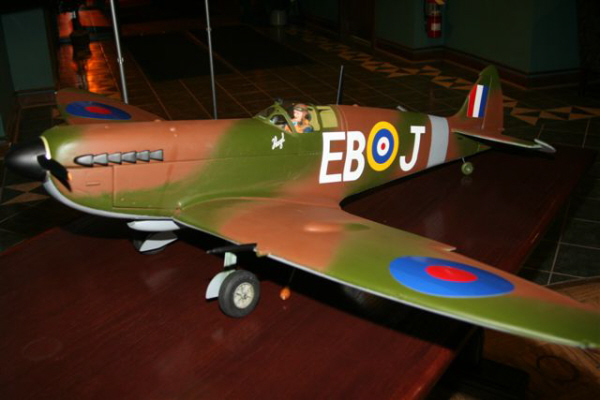
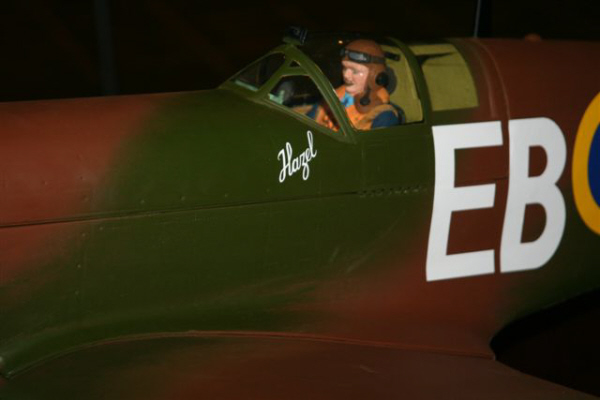
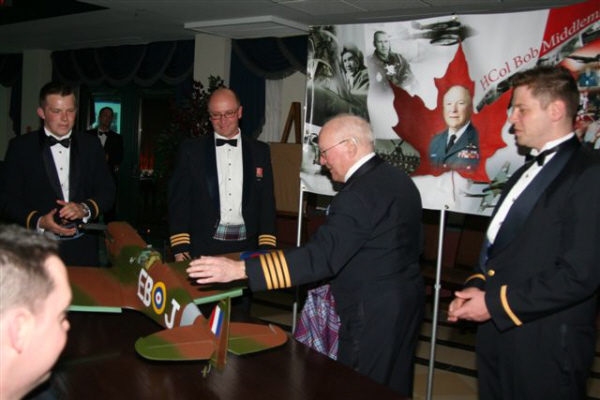
Top
Lionheart Award Presentation
On a Saturday evening, September 11, 2010 as 427 Sabre Lions prepared to finish up their SPAADS reunion in Penticton, B.C. with a Squadron dinner, an award was presented on behalf of the Association membership to W/C (R) Bob Middlemiss. This Award is the brain child of Sask Wilford. It is awarded to Lions who have by their actions positively enhanced the image of the Squadron as well as furthering the aims of the Association. W/C(R) Bob Middlemiss, Honourary Colonel of 427 Squadron and Chair of the 427 Squadron Association was the unanimous choice for the first recipient of this award.
Presentation Award Photo
Battle of Britan 70th Anniversary
RAF Station Westnorthnett celebrated the 70th Anniversary of the Battle of Britan in October, 2010. As part of the ceremonies they invited several wartime Spitfire pilots to attend and be honoured. Among the honourees was our own Bob Middlemiss. Some photos from that Anniversary celebration are below.
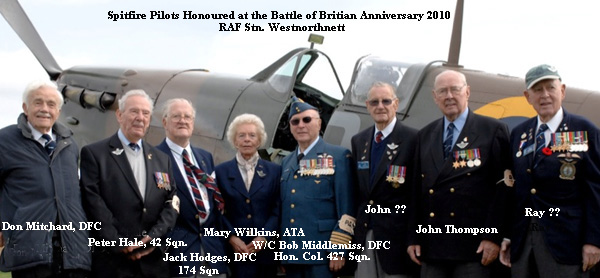
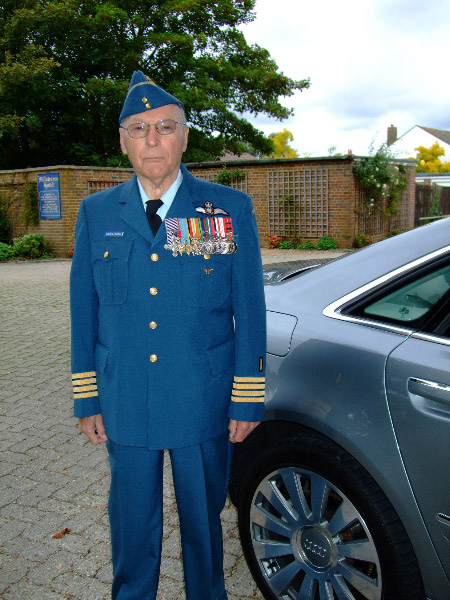
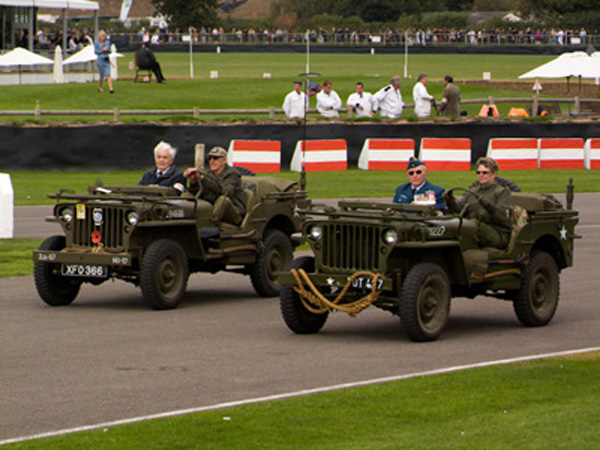

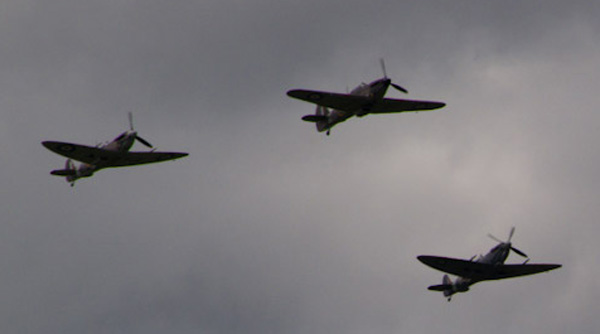

Top
A Tribute to Honourary Colonel Robert (Bob) Middlemiss.
A special museum display celebrating his Air Force career and achievements as a Second World War fighter pilot was unveiled earlier this week. .....read more
W/C (R) Bob Middlemiss has been busy,again. He was invited to take part in the dedication of a statue of Buzz Beurling, the Canadian Hurricane and Spitfire ace with more than 33 victories, at the Canadian Warplane Heritage Museum. Below Bob is in several of the pictures marking the event. The young lady in the photo is Michaela, who is assisting Bob in writing a biographical book. It should be noted that for a part of the war Bob flew out of Malta as did Beurling. Bob's speech at the CWHM dedication is below.

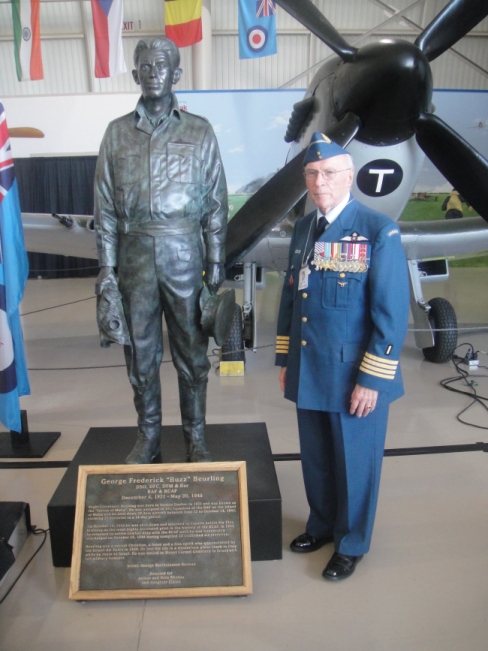
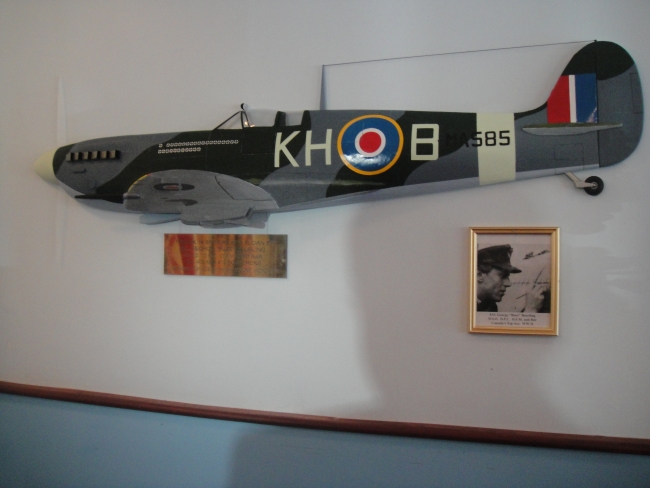
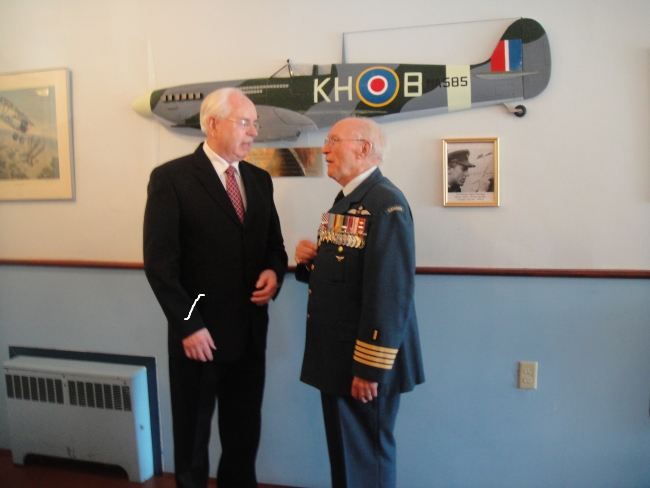
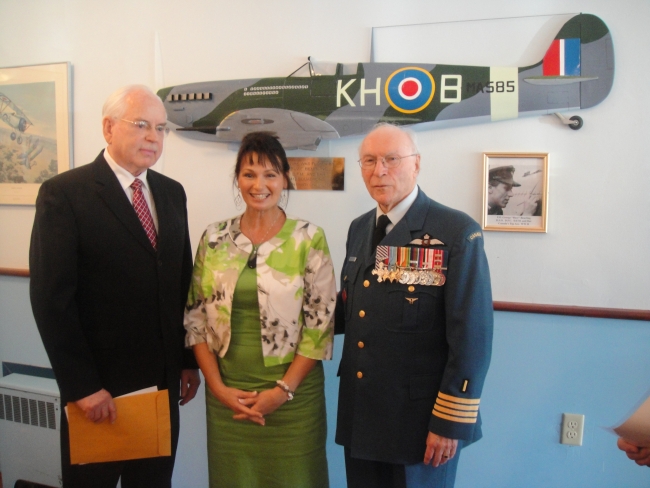
From the Official AirForce site
The Canadian Warplane Heritage Museum unveiled a new statue honouring Second World War fighter pilot Flight Officer George Frederick ‘Buzz’ Beurling on Thurs. Sept 1.
Among those who attended was 427 (Special Operations) Squadron Honorary Colonel Bob Middlemiss, who flew Spitfires with F/O Beurling during the Second World War.
F/O Beurling, DSO, DFC, DFM and Bar (RCAF) had more than 33 victories in his four years with the RAF and the RCAF, most of which were accomplished within his 5.5 months in the Maltese theatre.
His abilities in the cockpit of any aircraft were second to none. He would see enemy aircraft over Malta several minutes before his compatriots spotted any signs of them. He was the most decorated pilot of Canada’s Second World War effort but yet mostly unknown to the Canadian public.
Today, in honour of this great Canadian war hero, we present this tribute by HCol Bob Middlemiss.
I was in three squadrons with Beurling, RAF 41 Squadron, and 249 Squadron in Malta, and then RCAF 403 Squadron at Kenley and at Lashenden Airfield.
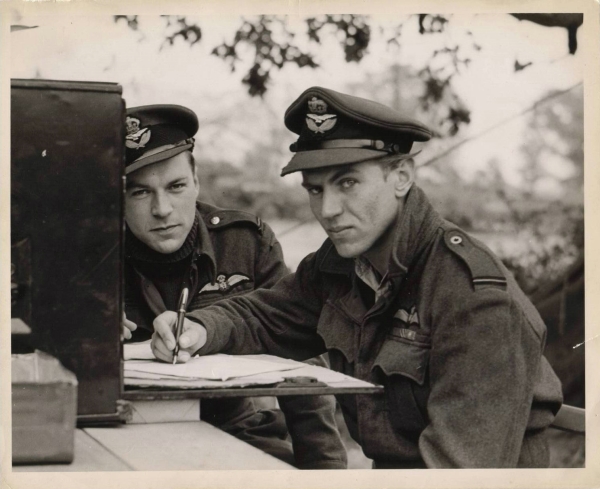
F/O Bob Middlemiss and F/O Buzz Buerling
I am not sure how George Beurling became "Buzz" but I assume that he would often buzz the aerodrome after one of his victories. As for "Screwball", I assume it was people who did not know him well who considered his antics as screwballs.I would say that he was one of a kind, a loner and a person that had full confidence in what he was doing.
Beurling had unbelievable eyesight. He could see further than anyone I believe in the Air Force, a superb marksman again being able to hit enemy aircraft from great angles off or deflection and an excellent pilot with great confidence and knew that his job was to shoot down the enemy.
In 41 Sqn he scored two ME 109s, unfortunately no one saw the destruction of these aircraft or did they show up on his cine film camera. We all thought here is a young "Sprog" trying to make a name for himself. Later on in Malta we were able to see him in action so some of the pilots from 41 Squadron who were now in Malta became believers.
Like so many of his desires, when one of the pilots in "41" was posted to Malta but preferred not to go, Beurling jumped in and asked the CO if he could take his place. The CO was happy to allow this keen young pilot to take the place of the other pilot.He made his way to Malta as we all did by flying off the aircraft carrier "HMS Eagle " and arrived in Malta on June 9th, 1942 and posted to 249 Squadron the same squadron that I flew with.
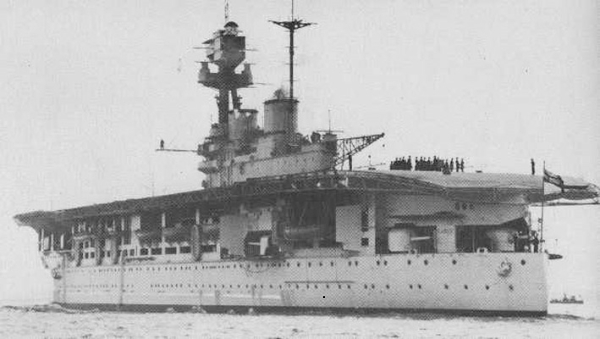
HMS Eagle, the aircraft carrier that F/O Bob Middlemiss and F/O Buzz Buerling had to fly their Spitfires off to be able to reach Malta.
Photo Credit: submitted.
We were able to see from the ground the raids that came from Sicily, when Beurling would look up from the direction of the raids and counting, the number of bombers approaching, we other pilots there with him would not see them for some 30 or so seconds after him. Then he would be counting the number of fighters that were there to guard the bombers, again it would be again a short time later that we could see them.
In Malta you did not claim any of your victories, it was either your wing man or from personnel on the ground. As I mentioned he would often shoot down an aircraft from zero or 90 degrees off, always aimed to hit the pilot again with a minimum amount of ammunition, that means even with one or two cannon shells.
We were both interviewed by the Wing Commander for our officer's commission. The day of the interview I arrived all polished and in full uniform (normally worn when meeting with the Wing Commander.) Just before the appointed time Beurling arrived from the aerodrome where he had been working with the ground crew, came in sweaty, in shorts and quite dusty. His first statement to me was, "Bob, could you lend me your comb to do my hair?”
I then went into the Winco's office had my chat and then went outside of his office. In went Beurling, the door being an opening in the wall with beads hanging down so I could hear all the conversation. Beurling in his chat said to the Wing Commander he really did not want to be commissioned because of the saluting and all the other things connected to being an officer. The Wing Commander assured him that he would have no trouble as all looked up to him for his great feats. We were both commissioned on my birthday, July 30, 1942. I received the news when I was instructing at 53 Operational Training Unit (OTU).On leaving Malta, Beurling presented me with the Italian insignia from a Machi 202. A couple of years ago I gave it to the RCAF Museum at Trenton.
After my rest tour from 53 OTU, I was posted to an RCAF Sqn based at Kenley and then on the Airfield at Lashenden, living in tents and preparing ourselves for the time when we would be invading the continent. I was lying down outside the tent that was our dining room, enjoying the sun when I got a kick on the bottom of my boot. Here was Beurling having returned from his rest tour in Canada.
One incident that I well remember was the day that we were giving Wing Commander "Johnny" Jonhson his farewell dinner. The AOC was flying over from his Headquarters in an Auster aircraft. When he flew low over the top of us Beurling happened to have a shotgun over his shoulder and said ‘I will give a "ring and a half" of deflection’ and fired. When the irate AOC landed and questioned us we all pleaded ignorance and said it was probably a farmer shooting at some ducks - luckily nothing further was said. Also here Beurling would take up the Tiger Moth and do spins and aerobatics over the field then often would land in a farmer's field and buy and bring back some freshly laid eggs. On these occasions we had a feast of yummy eggs.
When we left the airfield we returned to Kenley and here after a short time the type of operations of doing fighter sweeps and sweeps protecting the B-17 bombers, Beurling did not feel that this was his cup of tea, not enough action and chances of engaging the enemy. For a number of reasons the Group Captain had him transferred from our 127 Wing to the 126 Wing at Biggin Hill. It was during this time that he requested that he be given four P51 Mustangs so that he could roam deep into enemy territory and once again fighting the enemy. This was refused and it was not long after that he returned to Canada and discharged.
I often wonder had he stayed in the UK and gone through the invasion and subsequent moves on the Continent how many more enemy aircraft he would have destroyed. I always considered him as the "Billy Bishop" of the Second World War.
The next time I saw Beurling when he and a couple of other pilots from 403 attended my wedding in Montreal, Beurling gave my wife and I a present of pearl handled fish knives and forks which I have never used but still have them as a memento. Later I was to meet him on St. Catherines’ Street, Montreal, an in our conversation he mentioned that the Israel's Air Force had Spitfires and looking for volunteers. He said he was going and why not come along. My answer was, Buzz I don't think my wife in the short time that we have been married to see me fly off again to fight another war.
Sadly as you know he was killed in a Norseman when it caught fire on his approach to Rome. I always believed that the aircraft had been sabotaged. He then laid in the morgue and after some time Vivian, a lady friend of his, had his body removed from Italy and buried in Israel. For a number of years every Remembrance Day a senior officer of the RCAF placed a wreath of poppies on his grave. I am not aware whether this is still being done.

Col Pat Dennis, then Canadian Defence Attaché in Israel, kneels at the grave of F/O
Beurling in the Haifa Military Cemetery in Israel.
Photo Credit: submitted.
Of course I have always felt that our great country and government have not honoured this great airman and am pleased that at least a statue has been dedicated in Hamilton after these many years.
Honourary Colonel R.G. (Bob) Middlemiss Remembrance 2011 pictures
A 2010 presentation to Bob at Camp Borden
Middlemiss Single Malt
A Testimonial for Bob
The Veterans - Interview with H/Col Bob Middlemiss
My Flight to Malta

